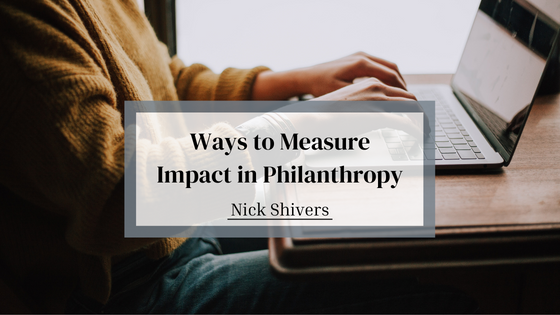As a philanthropist, you should thoroughly evaluate and assess the returns that you receive from your philanthropic investments. Doing so will allow you to make the most informed decisions and improve the effectiveness of your efforts.
Assessing Your Philanthropic Impact
Although impact measurement is still in its infancy, it is becoming more common for organizations to analyze their philanthropy’s impact. There are no standardized methods or criteria for assessing the returns they receive from their investments. Instead, you can use various approaches to measure the impact of your philanthropy.
Suppose you are an organization that is directly involved in the operations of a private operating foundation. In that case, you can use the program outputs and outcomes to measure the impact of your philanthropy.
If you are a financial supporter of an existing nonprofit, you can rely on the organization to provide you with the information to make informed decisions regarding its operations. Nonprofits should be able to articulate their goals and processes in both quantitative and qualitative data. They should also be able to share their achievements and track their progress with potential donors.
You should also carefully consider the size of your charitable gift. Although it is crucial to evaluate your philanthropy’s impact, it is also required to be done in a manner commensurate with your financial contribution. If you would like to access more comprehensive data, you can use websites such as Charity Watch or Charity Navigator. These websites allow users to monitor various aspects of a nonprofit’s operations.
Outputs and Outcomes
The output of charitable activity is a set of actions, practices, or services related to the organization’s philanthropic activities. These can be measured in both quantitative and qualitative methods. For instance, a scholarship program’s output can be determined by the number of students that it supports.
A charitable activity’s outcomes differ from the outputs because they are not immediately observable after the program has been delivered. They can also not be attributed to a single program or intervention. Instead, they can be observed gradually and contribute to the overall system changes that are not visible after completing the program.
Traditionally, the measurement of charitable activity’s outcomes has been carried out through randomized control trials. Due to the technological advancements that have occurred in the field of data gathering, this method can now be used to improve the efficiency of the study. For instance, a scholarship program can be evaluated to determine its quality of education to financially disadvantaged students.
Despite the various advantages of performing this type of study, it is still important to note that the results of charitable activity can be misleading due to the complexity of the environmental and social causes it addresses. For instance, while one can credit a philanthropist for an outcome, one cannot be held responsible for the actions and programs affecting the environment and society.
It is important to remember that a charitable activity’s progress is not always expected to be immediately apparent. This means that it is not possible to predict the outcome of a project or program within a year or two.
Collecting Data for an Evaluation
Nonprofits that receive grants must provide a progress report detailing the organization’s activities during the grant period. These reports are valuable tools for assessing an organization’s effectiveness. In addition, they can also be used to share their achievements with the public. You can additionally reach out to other external stakeholders such as community leaders and funders.
